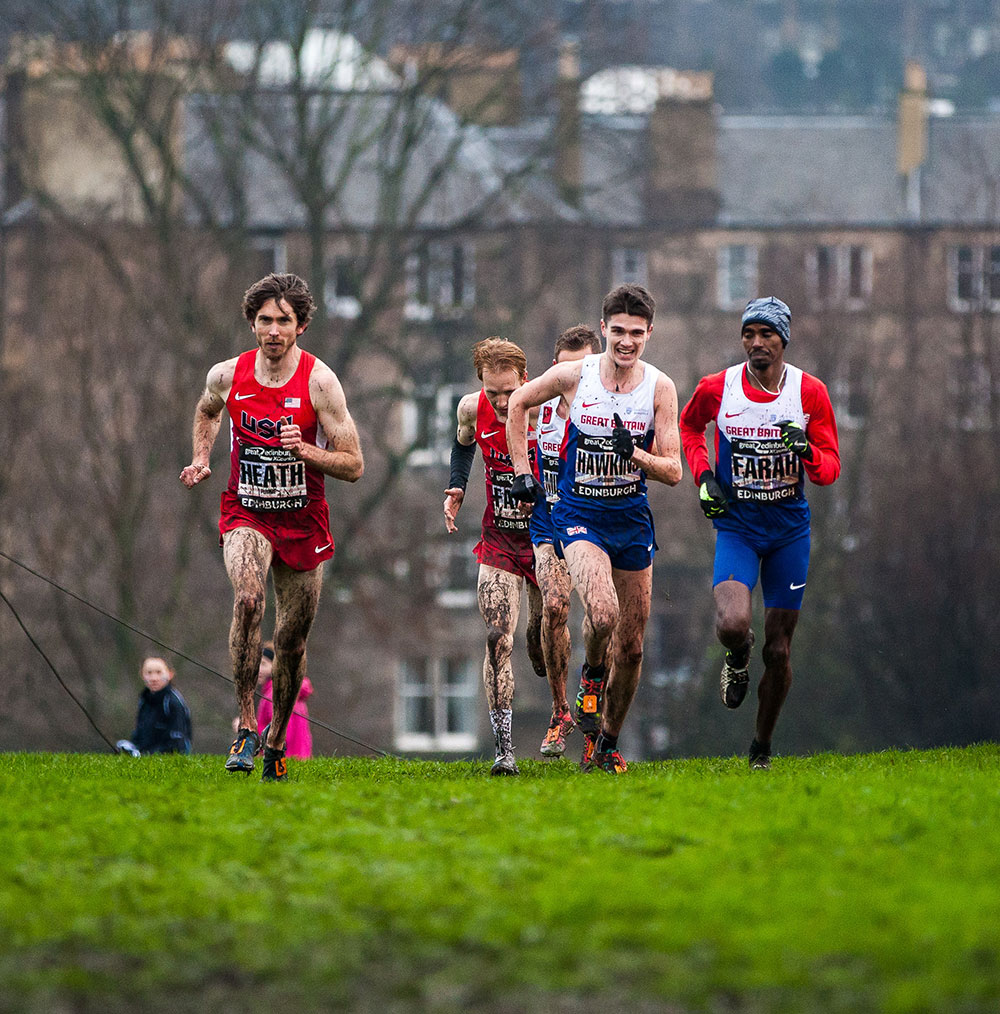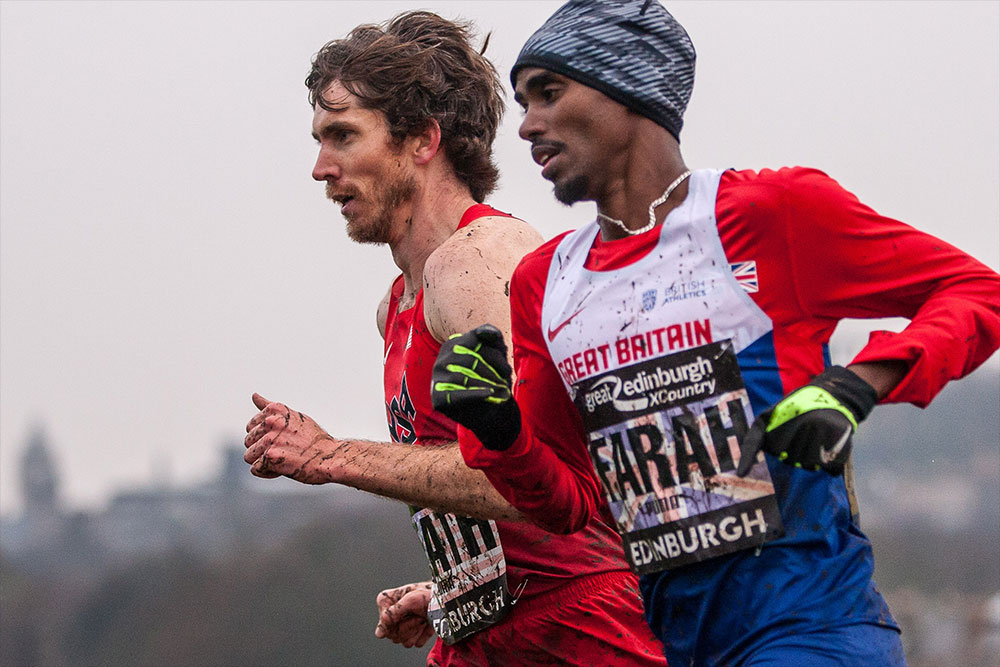[leadin]A little-known athlete from Minnesota shocked the running world when he defeated Olympic Gold Medalist Mo Farah this month in a high-profile Scottish cross-country race. His advantage? Capability to crush on a muddy course.[/leadin]

Garrett Heath is a fast runner — he races professionally, and he trains with the Seattle-based Brooks Beasts. But he’s not “reigning-5K-Olympian” fast. That’s a description reserved for Somali-born Brit Mo Farah.
Yet in a shocking finish, Heath overpowered Farah late in this month’s 5-mile race at the Great Edinburgh Cross Country International Challenge, snatching the victory from one of the greatest distance runners of the modern era in a long, sustained push over the last kilometer.
How? While the mud drained Farah’s usual springy step and stymied the late burst of speed he’s known for, Heath adapted to the course, revealing a secret every runner can use to their advantage.

“I liked my odds of winning a lot better on that course than I would have on a track against many of the guys in that race,” says Heath, 30. “The varying conditions are the part that I really love about cross-country.”
The secret? “It’s all about adjusting to the course,” he said.
Icy Roots
Heath, who hails from Winona, Minnesota, and won six state titles in track and cross-country as a prep, is no stranger to bad running conditions.
“I really believe growing up in the Midwest is a huge advantage for cross-country races like the one in Edinburgh,” he says. “I think your mindset going into the race is much different than someone who hasn’t had as much experience in really cold weather.”
Specifically, Heath says running in cold and muddy conditions as a high schooler is something he still calls on.

“I can still at least remember racing cross-country in the snow in October and putting on the skis in below-zero temperatures for many cross-country skiing races in the winter,” he says.
“Those experiences make toeing the line in 30-something-degree weather in Edinburgh seem much more manageable than it otherwise might.”
Given the course conditions, Heath knew it was the sort of race where anyone who raced smart could have a shot to win. That’s why he didn’t get psyched out when he found himself at the shoulder of Farah, who on paper, or in a controlled time trial, would be heavily-favored.
Racing An Olympian
“It was definitely intimidating [running with Farah],” Heath says. “Mo’s the best distance runner in the world right now, and probably one of the best all-time. It’s hard not to be a little psyched out at least a little bit by that, especially in his home country where there’s so much media there following him around beforehand.”
Still, Heath says, “cross-country is relatively much more unpredictable in how the race will play out both in terms of strategy and finishing order. Previous times are almost irrelevant.”
He went in with a plan to race for the win. Because Farah has a legendary finishing sprint, Heath wanted to be out of reach by the final 200 meters, where the course narrows and it becomes more difficult to pass competitors.
“In those conditions, if someone gets away, it can be hard to ever reel them back,” he says. “If I was still feeling strong with about 1K or 2K to go, I wanted to push the pace.”
With 1K to go, a teammate made a strong move; Heath matched it, then doubled down for a long, sustained finishing push. He says last month’s 10K National Club Cross-Country Championship, which he won after another runner kept the pace hot up front, prepared him mentally to be strong at the finish of the 8K course, which is longer than his usual 5K or 1500 meter specialty on the track.
“I still tried to save a little bit for the last 200, but I honestly just kept waiting for Mo to kick past me in the homestretch,” he says. “It wasn’t until the last 20 meters or so that I thought I had it.”
Heath says he will now turn his attention to making the Olympic team in either the 5K – where he could see a rematch on the presumably mud-free track with Farah – or the 1500 meters.





